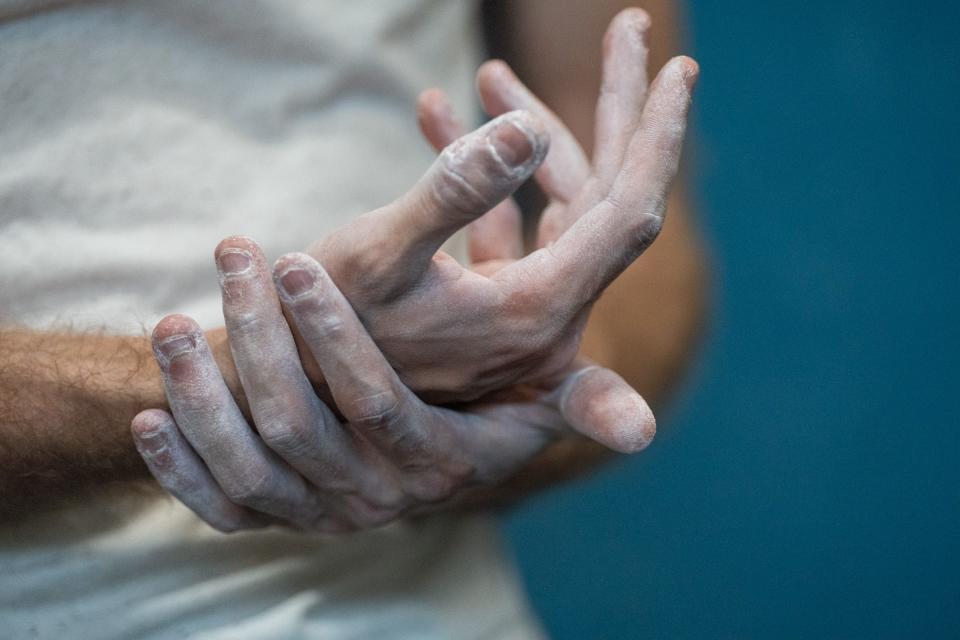Here's how one Austin man used ChatGPT AI to help find his diabetes diagnosis
Cooper Myers was the perfect patient with diabetes. The 24-year-old who moved to Austin in 2022 from South Carolina had been diagnosed with Type 1 diabetes after a routine blood test in 2020 showed his fasting blood sugar level was very high.
He was thirsty, tired and had to go to the bathroom a lot — classic signs of diabetes.
Myers had a father, grandfather and great-grandfather, all diagnosed with Type 2 diabetes, and all were lean, if not underweight.
After that blood test, Myers did everything he knew to do. He avoided eating carbohydrates and focused on protein and vegetables, and he exercised. Even with an insulin pump and a continuous glucose monitor, he still couldn't get his blood sugar under control.
Something didn't fit
Then in January 2023, Myers consulted the artificial intelligence program ChatGPT and asked: "If my father is a skinny type 2. My grandfather is a skinny Type 2 and I am a skinny Type 1 with no antibodies, then could we have a different kind of diabetes?"

ChatGPT came back with a list of diabetes conditions that were not the common Type 1 or Type 2 and a little about each of them. One of them was MODY: Maturity-Onset Diabetes of the Young. It happens when there is a gene mutation through many generations. It also resembles Type 1 or Type 2.
"Everything (ChatGPT) told me seemed like it matched very well," Myers said. Myers works in the tech field as an AI coder. That made him comfortable turning to ChatGPT, as well as being realistic about its limits.
He knew he needed to bring this information to a doctor.
Getting to a real expert
He didn't tell his doctor, Keta Pandit with Texas Diabetes and Endocrinology, about the ChatGPT answer, but he did ask her if he could have something else other than Type 1 or Type 2.

Pandit also wasn't sure about his original diagnosis, either, because he didn't have those antibodies associated with Type 1 diabetes. His insulin pump also was set to a mode where he shouldn't be experiencing the number of low blood sugar readings he was. "There was concern for his safety," Pandit said.
More thorough testing showed that he didn't have any of those antibodies shown in Type 1. They looked at his pancreas function, and he did have some function demonstrated by the existence of C-peptides, which indicate his body is producing some insulin. That meant he couldn't have Type 1, but he wasn't a classic Type 2 diabetic, either.
Then Myers did some genetic testing, which showed he had the gene mutation for MODY 2, one of the three kinds of MODY. His gene was 90% affected, which meant that while he did produce some insulin, it wasn't enough.

A diagnosis with more freedom
Myers was able to get off the insulin pump. Now he takes a pill twice a day to regulate his blood sugar levels. He doesn't have to be as strict with his diet, but he does wear a continuous glucose monitor in his arm to keep tabs on his levels.
While Myers' MODY is treated with less insulin, sometimes people with MODY can develop insulin resistance, which would require more intervention, Pundit said. Having a healthy diet and exercising regularly will hopefully keep his MODY under control, she said.
Living as a misdiagnosed Type 1 diabetic for three years, he said, "is a really stressful way to live. Everything revolves around food. You are in a constant state of worrying about your levels."
Not being dependent on an insulin pump and not checking low blood sugar levels as often has allowed Myers to be more active, including hiking and doing indoor rock climbing.
"It's been a really big improvement for me," he said.
This article originally appeared on Austin American-Statesman: ChatGPT helps Austin man find MODY: Maturity-Onset Diabetes diagnosis

